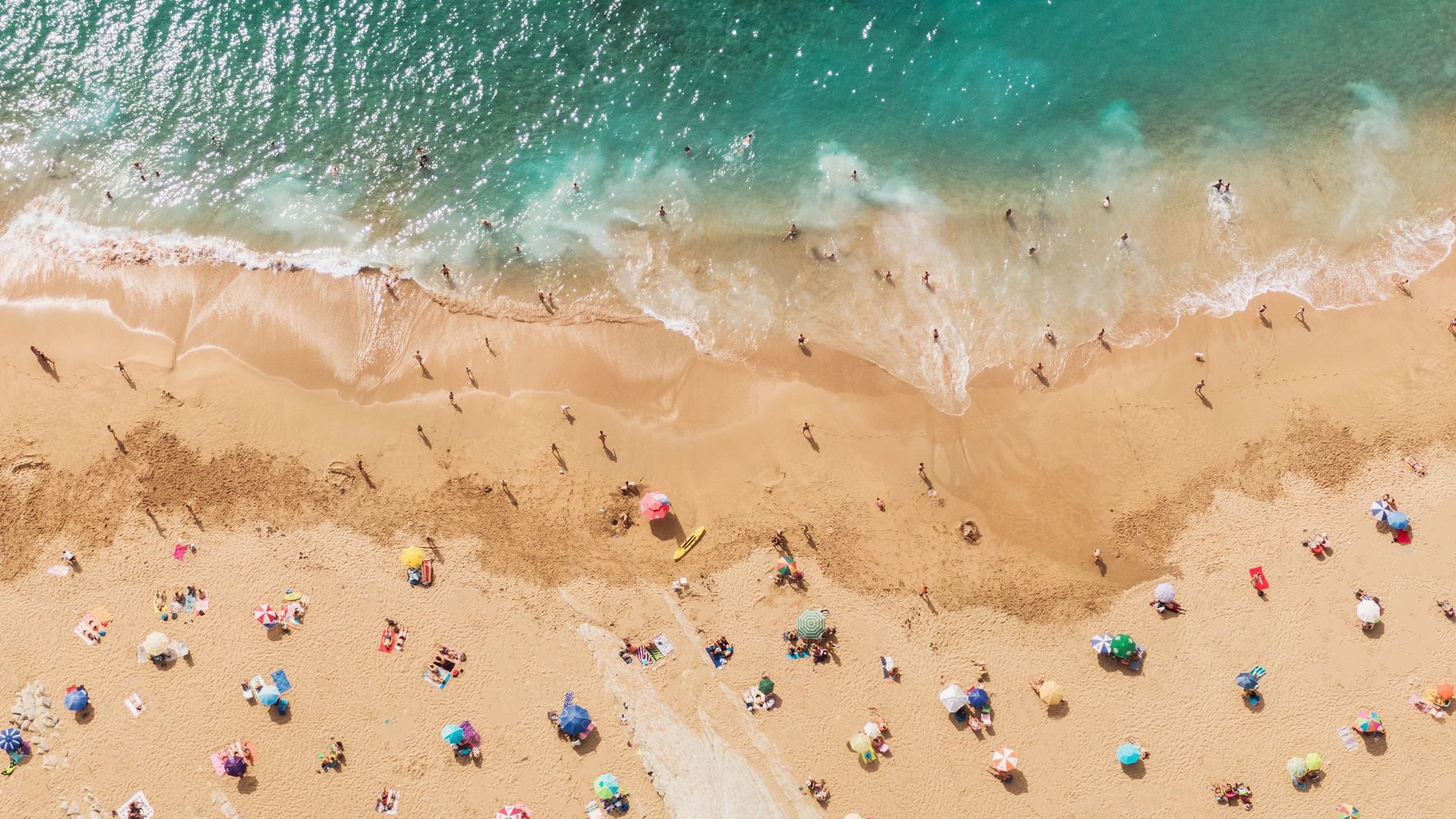Certain feelings have practically vanished since the beginning of the coronavirus pandemic ― the most major of which is hope.
The past year-plus has been heavy and exhausting, with barely enough time to breathe before the next piece of not-so-great COVID-19 news drops. It seems, though, that we are rounding a corner as cases, hospitalizations and deaths continue to drop and vaccines become more available.
“Speaking for the U.S., I’m really hopeful that this summer will be remarkably different from last summer,” said Jennifer Nuzzo, a senior scholar at the Johns Hopkins Center for Health Security. “We’re on a good path right now and I just hope that we can stay on the path that we’re on.”
Following that path, though, is dependent on society’s actions, including continuing to follow public health guidance and getting vaccinated. It’s also dependent on the unexpected curveballs the pandemic has been throwing at us for the past year.
So where does that leave us? Below, experts shared their expectations for summer 2021 throughout the country based on how the pandemic is going right now:
As more people get vaccinated, there will likely be fewer restrictions
The importance of getting the coronavirus vaccine when it’s available to you cannot be overstated: “These vaccines are absolutely our way out of this pandemic,” said David Aronoff, director of the Division of Infectious Diseases at Vanderbilt University Medical Center.
Timothy Brewer, a professor of medicine and epidemiology at the University of California, Los Angeles, added that as people continue to get vaccinated into the spring and summer, he expects that the Centers for Disease Control and Prevention will relax some of its guidelines and restrictions.
So, as more and more people get their shots and are protected from severe COVID-19 and death, we can expect to be able to safely do many of the activities we’ve missed out on over the past year.
Outdoor gatherings will likely become a safe norm
“One of the things that we are feeling better about is the data around SARS-CoV-2 transmission and recognizing that outdoor activities have not turned out, as best as we can tell, to be a significant factor in pushing the pandemic forward,” Brewer said, referring to the fact that the threat of virus spread is low in socially distant, outdoor settings.
Brewer expects outdoor gatherings to increase (and perhaps even expand in size slightly) as a safe way for individuals to get together. So, for the first time in ages, we can likely have that barbecue with friends.
“I’m not sure whether we’ll get back to large outdoor mass gatherings like athletic events where stadiums are full,” he added, “but I do think that there will be more smaller outdoor gatherings.”
Nuzzo stressed the importance of caution, however. It’s still considered risky for unvaccinated people to get together with others, so take note if you haven’t had your shot.
“The worry is when unvaccinated people gather,” Nuzzo said, specifically referring to children who are not old enough to get the vaccine. “But if all of the adults are vaccinated then I think [an outdoor gathering] is a reasonable thing to do.”
Restaurants will probably lean heavily on outdoor dining
Outdoor dining and drinking with appropriate spacing and physical barriers will also likely be a summer staple for many throughout the country, Brewer said. This is also safer when more people gathering are vaccinated.
“I think there will be less concern about what people do outdoors,” he added.
This is good news for everyone, and especially for those who miss visiting a neighborhood restaurant for a meal — takeout has been a great way to support local restaurants over the past year, but certain foods just don’t travel well. Plus, there’s just something better about sitting at a restaurant and having dinner and a drink.
Beaches and pools will be a relatively safe way to enjoy the warm weather
When it comes to quintessential warm-weather activities like visiting the beach or pool, Aronoff said, people should feel comfortable participating.
“A great advantage of the beach [is] that you can spread out and enjoy the fresh air and water,” he explained, noting that pools offer this same relative safety.
That said, it’s important to use common sense while engaging in these activities. “Maintaining a safe distance remains important until more people are immunized and the pandemic is clearly on the way out,” Aronoff said.
For this reason, he’s still wary of water parks, where crowding is known to happen on waterslide staircases and in line to the pool. “People should still use caution when spending time at water parks that have such features,” Aronoff said.
Vaccinated people can gather indoors this summer, too
The CDC recently released guidance for what fully vaccinated individuals can do once they reach the two-week mark after their second dose of the Moderna or Pfizer vaccine, or the two-week mark after the one-dose Johnson & Johnson vaccine.
Vaccinated individuals can gather indoors, without masks or social distancing, with other vaccinated people — which is likely to be another socialization opportunity this summer particularly on rainy or sweltering days.
People who are vaccinated can also spend time indoors with unvaccinated, low-risk people from a single household.

Travel will probably increase, but it comes with risks
Airports are starting to see more traffic now, and it’s arguably only going to increase as we move into warmer weather and more people are vaccinated.
This, however, comes with increased risk of transmission; it’s still best to stay home while we’re getting the pandemic under control. Experts say long-haul leisure travel and vacations likely won’t be advisable until later in the year (at the earliest). The CDC still recommends avoiding travel unless it’s absolutely necessary ― even if you’re vaccinated.
Some areas will reach herd immunity before others
Reaching herd immunity is something public health experts have used as a benchmark since the first days of the coronavirus pandemic. Herd immunity is when enough of the population, about 70%, has antibodies developed either through natural infection or vaccination, which causes community spread to drop and become unlikely.
“If you look at what’s happening with cases in particular, they’ve really fallen off since the beginning of January,” Brewer said. “It’s really hard to attribute that to population changes; something else has to be driving that. It couldn’t have been vaccines at that point, we didn’t have as many vaccines as we do now.”
Brewer suspects that particularly hard-hit areas like Los Angeles are getting closer to herd immunity when you combine the number of people who had detectable COVID-19, those who were unknowingly infected, and those who have now been vaccinated.
He added that he expects to see this happen in other harder-hit areas in the coming months, with some cities or states reaching herd immunity before other parts of the country.
Variants will appear and COVID-19 transmission will continue
The outlook for the summer is generally sunny: We can look forward to eased restrictions, more available vaccines and social gatherings with those who are vaccinated.
But the fear of new, more transmissible SARS-CoV-2 variants is real ― especially if they’re more resistant to vaccines. Aronoff said experts are tracking new strains very closely. Additionally, monitoring the spread of variants in unvaccinated areas will continue into the summer as well. We’ll see much more general preparedness compared to last year.
“I continue to look for signals and continue to scrutinize the data, but so far I’m encouraged by the fact that we haven’t seen a real rise in case numbers particularly in the states where they have reported the variants,” said Nuzzo, who has been tracking COVID-19 trends and data since the pandemic’s beginning.
Nuzzo added that while things could take a turn for the worse, the data is not currently extremely worrisome ― and by wearing masks, social distancing, washing our hands and getting the vaccine when it’s your turn, we’ll help slow the spread of SARS-CoV-2 and its variants.
But there is reason to be worried about potential virus spread in the states that have already loosened restrictions
The hope that many public health experts feel about the summer is instantly met with the reality that some parts of the country have gone against national public health guidance and prematurely ended all safety precautions.
“This does have the possibility of going off the rails as more and more states are just throwing open the barn doors and lifting all restriction as though the virus has already disappeared,” said Nuzzo, adding that premature reopening could result in an incredible setback.
She stressed that those who live in states that are reopening with no measures in place should continue to wear their masks, wash their hands and practice social distancing. Also, remember that visiting an indoor space with no mask rules, no social distancing and no limits on capacity is a major risk for virus spread. “Just because [the restaurant is] open doesn’t mean you have to go,” she added.
We’ve been through a year-plus of an overwhelming, difficult and unfair pandemic ― but at this point, the end is truly in sight.
Long story short: Those who are fully vaccinated against COVID-19 will experience a version of life that is fairly “normal” — visits with parents and grandparents, local beach house rentals with vaccinated loved ones, drinks with friends, hugs from family — without the overwhelming fear of becoming seriously ill or dying from the coronavirus.
“We’re in the last mile, folks. Let’s not quit the race before we win,” Nuzzo said.
Experts are still learning about COVID-19. The information in this story is what was known or available as of publication, but guidance can change as scientists discover more about the virus. Please check the Centers for Disease Control and Prevention for the most updated recommendations.


